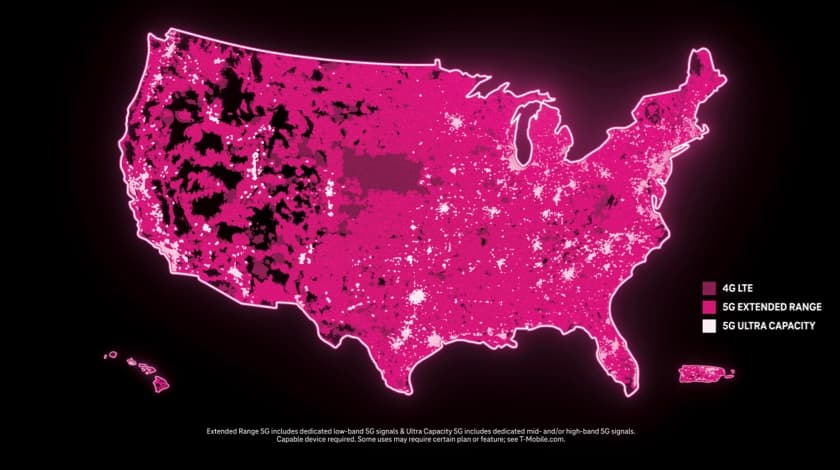
Mid-band 5G uses higher-frequency radio bands than 4G, which can deliver significantly faster speeds than 4G. However, mid-band 5G is shorter-ranged than 4G. T-Mobile also acquired the 2.5GHz band spectrum from Sprint. The 2.5GHz band is a great way to deliver impressive speeds and range at the same time.
Despite T-Mobile’s promises to be the first nationwide 5G network, there is still some question about where T-Mobile 5G will be available. While T-Mobile offers a lot of 5G coverage, it is not the country’s most widespread 5G network. However, T-Mobile 5G coverage map is still considered one of the biggest in the country.
Where is T-Mobile 5g Actually Available?

T-Mobile’s 5G network is a little different than other carriers. It uses three layers of the spectrum. The first is a 600MHz spectrum, which is a low-band spectrum. This is great for nationwide coverage but will provide less speed than millimeter-wave or mid-band spectrum.
T-Mobile’s 5G Home Internet is available in hundreds of cities across 48 states and has no data limits. The service is also available in a select group of rural areas. T-Mobile is expanding its coverage to 40 million households by 2022. The company is offering a promotion called the Worry-Free Test Drive, where customers can try the service for 15 days without incurring any fees.
The most impressive tidbit about the T-Mobile 5G Home Internet is that it is much cheaper than its fixed wireless competitor. There are no equipment rental fees to pay, nor are there any additional fees. This may be the best deal you’ll find at your address.
T-Mobile 5g Internet Coverage

T-Mobile’s 5G home internet is a new service that promises to offer faster and more reliable internet for the home. The service relies on the same network as T-Mobile’s smartphones. This high-performance network has been proven to be one of the best in the country.
The T-Mobile High-Speed Internet Gateway delivers a T-Mobile 5G home internet service directly to your home. The gateway features a router and modem that are easy to install. The internet service is also easy to use.
Whether you’re looking to purchase a new phone or upgrade your home internet, you want to know how good the T-Mobile 5g coverage is in your area. The company claims to have the fastest wireless network in the U.S., and an independent third-party audit backed up this claim.
The study gathered data from over 810,676 real 5G users. Open signal collected data through automated and user-initiated tests between March 16 and June 13, 2021.
T-Mobile’s network is made up of three layers: high-band, mid-band, and low-band. All three layers provide different speeds, coverage, and capacity. High-band offers the fastest data speeds, while low-band and mid-band are less affected by congestion. T-Mobile has begun to build out its low-band 5G network, which offers speeds between 30-75 Mbps.
T-Mobile’s high-band spectrum uses frequencies in the 24 GHz band. The company has also bought spectrum in the 37 GHz and 47 GHz bands. These bands offer better performance, but the coverage is limited.
Mid-band spectrum is another key aspect of the T-Mobile 5g network. It’s faster than 4G LTE and offers better coverage.
Is T-Mobile 5g Coverage Small?

Despite T-Mobile’s recent acquisition of Sprint, the company still needs to complete a full rollout of C-band 5G. Instead, it is focused on rolling out mid-band and high-band frequencies. This gives it a competitive advantage over its rivals.
While T-Mobile is able to provide C-band Coverage in 2023, it still plans to start rolling out mid-band availability by late 2020. Compared to low-band frequencies, mid-band offers better coverage and faster speeds. T-Mobile also calls this spectrum “Goldilocks” because it offers a good balance of robust coverage and fast speeds.
While the high-band frequencies deliver superfast speeds, they cover fewer areas than the low-band or mid-band frequencies. This means that other carriers will better serve users in rural areas.




